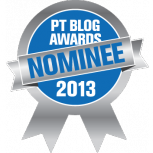 Silence. Itís one of the most beautiful things we experience in life. Itís also one of the most painful.
Silence. Itís one of the most beautiful things we experience in life. Itís also one of the most painful.
It might be difficult to imagine how one word can run the gamut across what appears to be the continuum of our lives. It spans the great divide between pleasure and pain, between beauty and agony, between love and loss.
Silence can be succulent and sensational. It can also be painful and power-hungry.
Itís time for all of us to break the silence on silence itself.
If we are comfortable within our own skin, silence can be absolutely delightful. It may give us time for quiet reflection or to find serenity in the moment.
A moment of silence can be a way of acknowledging the passing of someone important to you. It may provide us with peace at a time of great anguish.
A moment of silence - up to 10 seconds, in fact - may also be the time required for someone to hear what you are saying, process it, and respond accordingly. Try waiting that long for a response. It feels like an eternity.
If we can be so lucky to have a special someone in our lives, then sharing silence with that person can be ethereal and a moment of sheer beauty. The words left unsaid can be absolutely stunning to us. They may seem almost unnecessary.
Sadly, there is also a downside to silence. It can be used as a painful tool, at a time when words really should be said. We may listen intently to our partner for words to emerge - first 10 seconds, then 2 minutes, then 6 hours and beyond - and yet we hear nothing but our own heart trembling with consternation and anxiety. In moments like this, silence betrays our trust.
Silence can be used to hide from the vulnerability and openness found in the spoken word. Silence can allow us to abdicate our self-responsibility and provide us with a means of self sabotage. And, letís face it: it can be a button that is pushed with your partner, knowingly and willingly, that simply isnít constructive.
Itís tough to live Coveyís mantra of ďseek first to understand, then to be understoodĒ when someone is silent.
It can provide us with some of the hardest, and yet most valuable, lessons we will learn over time. Much like many things in life, oftentimes the one thing that is our benefit or our greatest strength is also our burden and the bane of our existence. Silence fits that category well. Silence is two sides of the same coin. It can be sheer beauty - or sheer agony. Itís a fine line between the two.
Photo credits: abesselink
 "Running Injuries: Etiology And Recovery- Based Treatment" (co-author Bridget Clark, PT) appears in the third edition and fourth editions of "Clinical Orthopaedic Rehabilitation: A Team Approach" by Charles Giangarra, MD and Robert C. Manske, PT.
"Running Injuries: Etiology And Recovery- Based Treatment" (co-author Bridget Clark, PT) appears in the third edition and fourth editions of "Clinical Orthopaedic Rehabilitation: A Team Approach" by Charles Giangarra, MD and Robert C. Manske, PT.
 Allan Besselink, PT, DPT, Ph.D., Dip.MDT has a unique voice in the world of sports, education, and health care. Read more about Allan here.
Allan Besselink, PT, DPT, Ph.D., Dip.MDT has a unique voice in the world of sports, education, and health care. Read more about Allan here.
 Top 5 finalist in three categories: "Best Overall Blog", "Best PT Blog" and "Best Advocacy Blog".
Top 5 finalist in three categories: "Best Overall Blog", "Best PT Blog" and "Best Advocacy Blog".